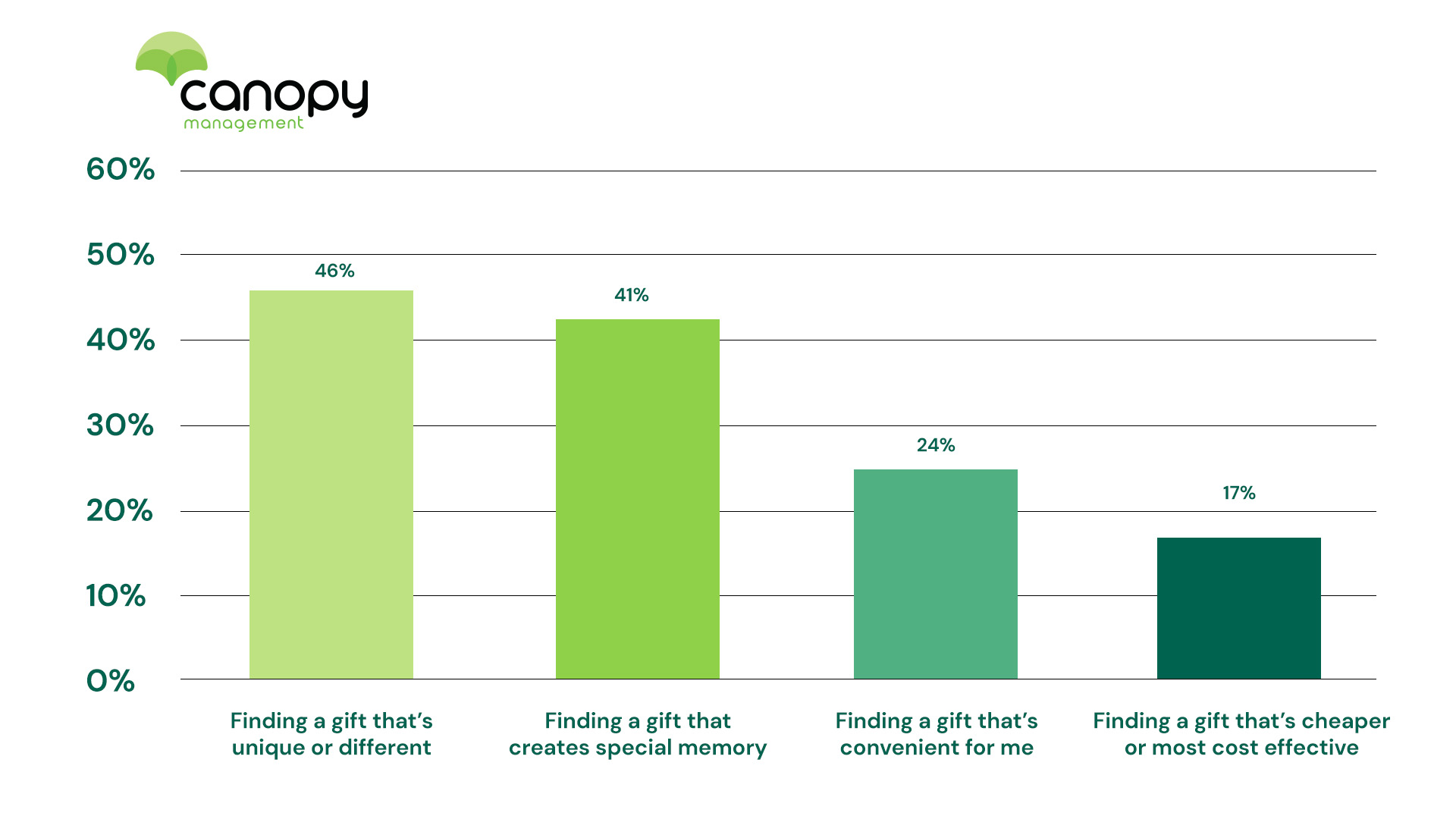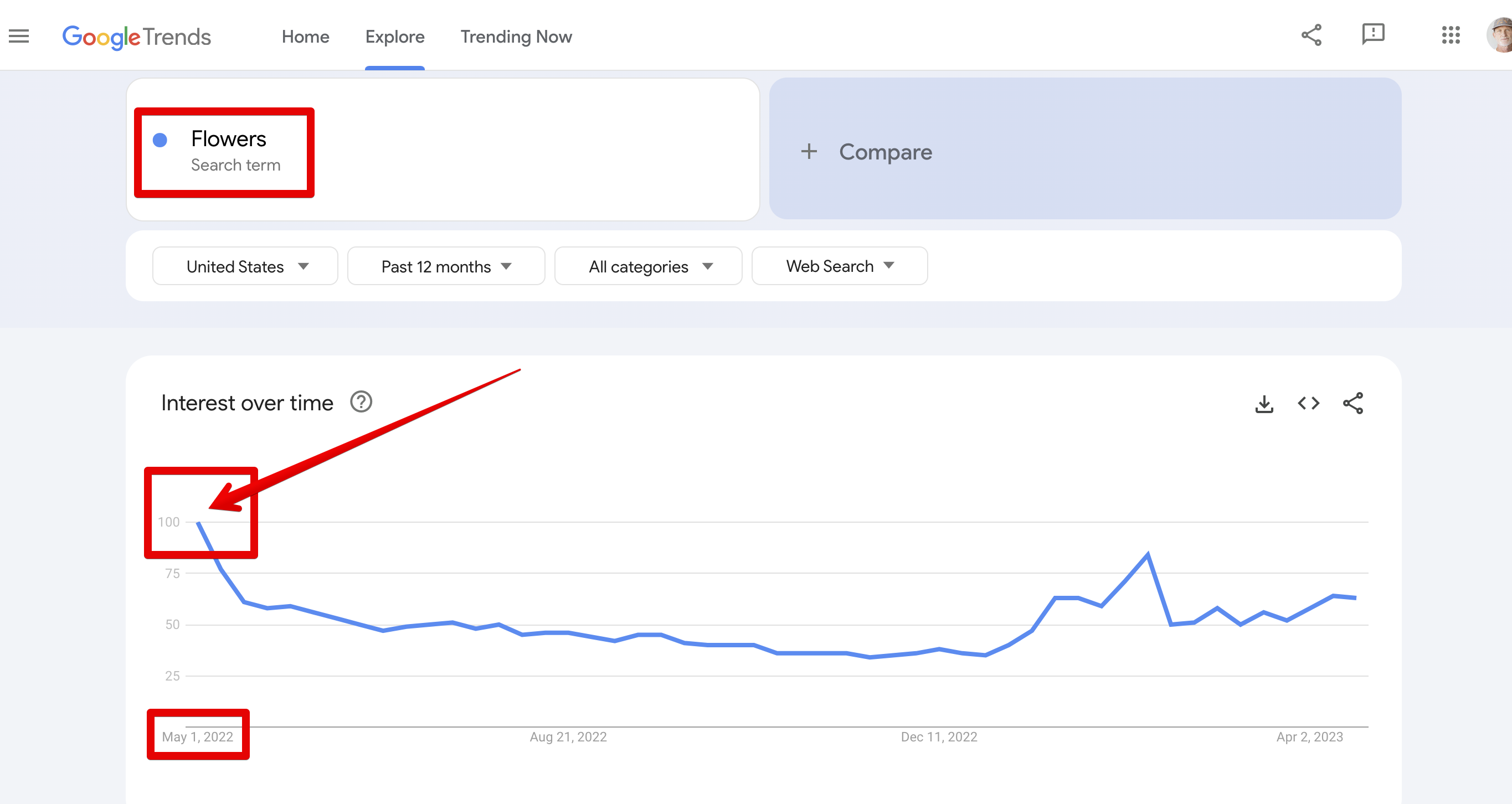Prepping Your Amazon Business for Seasonal Sales Success: An 8-Step Comprehensive Guide

Many brands struggle with the ups and downs of seasonal sales. Using Mother’s Day as a prime example, here’s how to maximize your sales during these tentpole events in 2025’s evolving Amazon marketplace.
Mother’s Day: A Perfect Example of Seasonal Sales Opportunity
Mother’s Day is observed in different forms worldwide and can be traced all the way back to celebrations of Ancient Greeks and Romans. While some countries have fallen in line with the United States’ tradition of celebrating on the second Sunday in May, others have their own traditions.
One thing is certain; we love to celebrate our moms.
Statistics show that on the whole, when it comes to Mother’s Day, shoppers are looking for something special and more than willing to pull out their wallets.
According to data compiled by Statista, last year almost 50% of shoppers viewed Mother’s Day as an opportunity to find a gift that was “unique, or different.” Only 17% were motivated by gifts that were “cheaper, or more cost effective.”

What Are We Buying for Our Moms?
The number one answer to that question is jewelry, accounting for billions of dollars in sales. Along with all that shiny stuff, consumers put money towards “special outings,” electronics, gift cards, and flowers.
In terms of strategy, Mother’s Day can be positioned somewhere between seasonal or holiday sales and an everyday product. That’s because, for the most part, you should be able to sell the most popular Mother’s Day products all year long.
Still, because your messaging and listing optimization are going to be specific to Mother’s Day itself, you need to also treat it as the seasonal product that it is.

Amazon Strategies that Work 12 Months Out of the Year
At the end of the day, celebrating our moms is a big deal, but in other ways, it’s just one more seasonal Amazon niche. Rather than focusing on how you can optimize your ecommerce business for Mother’s Day once every year, this post will concentrate on eight strategies that will help you with seasonal and holiday products throughout the calendar year.
The landscape of Amazon selling has evolved significantly in the last two years. This updated guide to help you navigate seasonal sales success in 2025:
1. Be Prepared for the Peaks and Valleys
The first step in preparing for seasonal sales is to understand the key sales periods throughout the year. The first step in preparing for seasonal sales is to understand the key sales periods throughout the year. Amazon’s promotional calendar has expanded in 2025, and now includes:
- Spring Shopping Event (March)
- Easter
- Mother’s Day (May)
- Father’s Day (June)
- Prime Day (July)
- Back-to-school season (August)
- Fall Prime Event (October)
- Halloween (October)
- Black Friday/Cyber Monday (November)
- Holiday Season (December)
Each of these events requires different inventory planning, advertising strategies, and promotional tactics. The addition of Amazon’s Spring Event and Fall Prime Event creates new opportunities for strategic sales boosts throughout the year.
Knowing these peak periods will allow you to plan your inventory, promotions, and marketing efforts accordingly.
2. Historical Data is Your Friend
This is where the seasonal nature of events like Mother’s Day works in your favor. You know they’re coming around every year, so use historical data to help plan for them.
The saying, “You can’t manage what you can’t measure,” is particularly appropriate when discussing the analysis of your Amazon sales data or PPC campaign performance. In 2025, Amazon’s enhanced attribution and metrics now provide deeper insights into:
- Customer journey analytics
- Repeat purchase behavior
- Off-Amazon campaign effectiveness
- Cross-channel performance
Reviewing your past sales data will help you to identify trends, such as when your peak sales occurred, which products sold best, and what marketing strategies were most effective.
Leveraging these new data points allows for more sophisticated planning for seasonal events. Make sure to incorporate these deeper metrics into your analysis of past performance to better predict and prepare for future seasonal sales.
3. Product Selection
Once again, you can use historical data to anticipate the future. You’re better able to determine which products are most likely to be popular during specific seasonal sales and choose products that align with the needs and interests of your target audience.
For instance, during Mother’s Day, jewelry and flowers are ever present, while back-to-school season may see a spike in demand for school supplies and educational materials.
In 2025, use Amazon’s improved analytics to identify not just what products sold well historically, but also emerging trends in your category. Amazon’s AI-powered insights can now help predict which items are likely to become bestsellers in upcoming seasons.
Additionally, consider sustainability as a selection factor—eco-friendly and ethically produced items are showing stronger performance in 2025 as consumer preferences continue to evolve toward sustainable commerce.

4. Inventory Management
Mother’s Day, the second most important floral holiday of the year, has been called the ‘Super Bowl of florists,’ with studies indicating that 24% of all holiday sales take place at that time.
You don’t want to run out of stock when demand is high, but you also don’t want to overstock and risk having excess inventory once the sales period ends. That’s where inventory management comes into play.
This area has seen the most significant changes in 2025:
- FBA Capacity Limits: Amazon has tightened FBA capacity limits, reducing the standard from 6 to 5 months of sales volume. Some sellers have seen cuts of up to 75%.
- Hybrid Restock Limits: There are signs of a return to ASIN-level restock limits, similar to policies from earlier years.
- IPI Score Focus: Your Inventory Performance Index has become even more crucial for maintaining adequate storage space.
These changes mean inventory management for seasonal products requires more careful planning than ever:
- Slow-moving SKUs can now block replenishment of your seasonal bestsellers
- Use Amazon’s Capacity Manager tool proactively
- Consider supplementing FBA with third-party logistics for overflow inventory
- Maintain higher sell-through rates to preserve your storage allocations
AI-optimized inventory platforms like Intellify, SoStocked, and inventory management strategies from the best full-service agencies like Canopy Management have become essential tools rather than optional advantages.
5. Make Adjustments to Your Product Listing Optimization
Just because you are selling a seasonal product, you’re still going to need to focus on doing all the (not-so-small) things right. A well-optimized product listing is always going to increase visibility and conversions during seasonal sales.
However, you do need to make a few adjustments to your seasonal products’ listing optimization.
Amazon keyword research is something that sellers concentrate on throughout the year. However, during holidays or specific seasons, successful ecommerce sellers should incorporate holiday-specific keywords into their listings. For example, include terms like “Mother’s Day gift” or “Halloween costume” during the appropriate seasons.
In addition to traditional seasonal keyword optimization, consider these 2025 enhancements:
- Leverage Amazon’s A+ Premium Content with seasonal themes
- Update product imagery to reflect the specific seasonal event
- Incorporate video content showing seasonal use cases
- Use Amazon Posts to create lifestyle content aligned with seasonal themes
- Ensure mobile optimization, as mobile shopping continues to increase in 2025
Take the time to do the keyword research and make adjustments to your most seasonally important listings as necessary. Remember to schedule these changes well in advance of the seasonal event to allow time for indexing and ranking improvements.
6. Pricing Strategy
Never forget that Amazon is very price conscious. You’ll want to closely track historical pricing fluctuations during the seasonal sales events. Research the market to understand the price range for similar products and adjust your prices accordingly.
Amazon remains highly price-conscious, but 2025 data shows more aggressive discounting is necessary during major events:
- 40-50% discounts are now common for Black Friday/Cyber Monday
- Strategic bundling is showing stronger results than single-item discounts
- Early-bird pricing followed by incremental increases as the event approaches
- Post-event “last chance” promotions to clear remaining seasonal inventory
Consider offering discounts or bundle deals to entice customers and stand out from the competition. Use Amazon’s competitive pricing tools to stay within the optimal range while maintaining profitability.

7. Marketing and Promotion
Even though we like to celebrate our mothers, don’t forget that according to Statista’s data, almost one in five shoppers are looking for a deal or hoping to save money on their seasonal gifts. Maximize your sales potential during seasonal sales with targeted marketing and promotion efforts.
The promotional landscape has expanded significantly in 2025:
Amazon Advertising
The flexibility of Amazon’s advertising platform allows you to create dedicated Sponsored Products, Sponsored Brands, and Sponsored Display ads for your seasonal products. This can help increase product visibility and drive more traffic to your listings.
In 2025, Amazon’s advertising capabilities have evolved to include:
- AI-Driven Targeting: Amazon’s advertising system now heavily leverages AI and machine learning for smarter targeting, predictive analytics, and real-time bid adjustments.
- Sponsored TV and Streaming Ads: Amazon’s expansion into Sponsored TV and streaming ads (on Freevee and Prime Video) offers high-impact video placements with non-skippable formats.
- International Expansion: Improved tools for multilingual campaigns make it easier to reach emerging markets globally.
If you really want to supercharge your Amazon advertising, don’t forget about Amazon’s most advanced ad platform, Demand-Side Platform.
Automation and Campaign Management
- Bulk Editing: New tools allow for more efficient campaign management across multiple products
- Rules-Based Bidding: Set automated adjustments based on performance metrics
- Dynamic Campaign Grouping: Organize and optimize campaigns more efficiently
Email Marketing
Send targeted emails to your existing customer base highlighting seasonal offers and promotions. Use this strategy to help drive repeat business and create a sense of urgency around your deals.
Social Commerce Integration
Increasingly, social media is blurring the lines between community and shopping. By promoting your seasonal products and offers across your social media channels, you’re better able to target your ideal audience with tailored content and visuals.
In 2025, Amazon offers better integration with platforms like Instagram, TikTok, and Pinterest. Create cohesive cross-platform seasonal campaigns to maximize visibility and drive awareness and engagement. That’s just going to lead to more sales.
Influencer Marketing
This dovetails with the recent changes to social media. More and more, we’re accustomed to getting our sales advice not from the company itself, but from the galaxies of influencers that circle around the various selling niches.
Amazon’s influencer program has expanded in 2025. Partner with category-specific influencers to promote your seasonal products, leveraging their credibility and reach to help increase trust and reach a wider audience.
8. Positive Customer Reviews are Critical
Amazon’s own data continues to show that reviews significantly impact purchase decisions. In 2025, the review ecosystem includes:
- Video reviews gaining prominence
- More weight given to verified purchase reviews
- Enhanced seller feedback systems
Continue to prioritize:
- Monitoring review sentiment for product improvement opportunities
- Prompt responses to customer inquiries
- Quick resolution of any issues
- Following up with Amazon’s “Request a Review” feature
Ready to Start Growing Your Amazon Brand?
Canopy’s Partners Achieve an Average 84% Profit Increase!
Find out moreFrequently Asked Questions About Seasonal Amazon Selling in 2025
When should I start preparing my Amazon inventory for a seasonal event?
For major shopping events like Prime Day or Black Friday, begin preparations at least 3-4 months in advance. For smaller seasonal events like Mother’s Day or Halloween, start 2-3 months ahead. With the tighter FBA capacity limits in 2025, your inventory should arrive at Amazon fulfillment centers 4-6 weeks before the event to ensure proper indexing and availability.
How do the new FBA capacity limits affect seasonal selling?
Amazon’s reduction from 6 to 5 months of sales volume for storage limits means you need to be more strategic with inventory allocation. Prioritize your best-selling seasonal items and consider using a hybrid fulfillment approach that combines FBA with third-party logistics for overflow inventory. Monitor your IPI score closely, as it now has a greater impact on your storage capabilities.
What’s the best way to optimize listings for seasonal events in 2025?
Start by updating titles, bullets, and descriptions with seasonal keywords 30-45 days before the event. Leverage Amazon’s A+ Premium Content with seasonal themes, update your main images to reflect the seasonal context, and add video content demonstrating seasonal use cases. In 2025, mobile optimization is particularly important as over 70% of seasonal shopping now happens on mobile devices.
How aggressive should my discounting be for seasonal events?
The competitive landscape in 2025 requires more aggressive discounting strategies. For Black Friday/Cyber Monday, successful sellers are offering 40-50% discounts on key items. For other seasonal events, discounts of 20-30% paired with creative bundling often produce better results than single-item discounts alone. Consider using a tiered approach: early-bird pricing, peak event pricing, and post-event clearance.
How can I leverage Amazon’s new advertising features for seasonal products?
Amazon’s AI-driven targeting now allows for more precise audience segmentation. Start with automatic campaigns to gather data, then refine with manual targeting. Sponsored TV and streaming ads should be considered for products with margins that can support their higher cost but greater reach. Use dynamic bidding strategies to automatically adjust bids during peak shopping hours of your seasonal event.
How do I manage international seasonal selling in 2025?
Amazon’s improved tools for multilingual campaigns make it easier to expand globally. Remember that different countries celebrate seasonal events on different dates (e.g., Mother’s Day is in March in the UK). Use Amazon’s Global Selling program to identify which marketplaces offer the best opportunity for your seasonal products, and leverage Amazon’s translation services to localize your listings properly.
What’s the impact of video reviews on seasonal products?
Video reviews are increasingly influential in 2025, with products featuring them converting at rates 15-25% higher than those with text-only reviews. Encourage video reviews by following up with customers who leave positive text reviews, asking if they’d consider adding a video showing their experience with the product. Amazon now prioritizes video reviews in their display algorithm.
How do I balance year-round and seasonal inventory planning?
Use the 80/20 rule as a starting point: allocate roughly 80% of your storage to year-round staples and 20% to seasonal items. During peak seasons, you might adjust to 70/30. With the new FBA capacity limits, consider using a “rolling inventory” approach where you gradually increase seasonal inventory while reducing some evergreen products, then reverse the process as the season ends.
How can I use Amazon’s new attribution tools to measure seasonal campaign success?
Amazon’s enhanced attribution in 2025 allows you to track customer journeys across multiple touchpoints. Set up separate attribution tags for each marketing channel to identify which drives the most seasonal traffic and conversions. Pay particular attention to the new “purchase cycle” metrics that show how many days and touchpoints customers typically require before converting during seasonal events.
What’s the best strategy for seasonal PPC in 2025?
Start your PPC campaigns 4-6 weeks before the seasonal event with lower bids to establish relevance and quality score. Gradually increase budgets as the event approaches, with peak spending during the 3-5 days of highest shopping activity. In 2025, Amazon’s predictive analytics can help you identify the optimal times to boost spending based on your specific category’s shopping patterns. Consider allocating 25-35% of expected seasonal revenue to advertising during major events.
How do I prepare for Amazon’s Spring and Fall Prime Events?
These newer additions to Amazon’s promotional calendar require specific strategies. For the Spring Event (March), focus on “refresh” themes and new product launches. For the Fall Prime Event (October), position it as an early holiday shopping opportunity with gift-oriented bundles and pre-Black Friday deals. Both events typically see less competition than Prime Day or Black Friday, offering better visibility at lower advertising costs.
How can agencies like Canopy Management help with seasonal selling?
Full-service agencies provide expertise across all aspects of seasonal selling, from inventory forecasting and listing optimization to advertising strategy and post-event analysis. In 2025’s more complex Amazon ecosystem, agencies can help navigate FBA capacity limits, optimize across multiple ad formats, and provide data-driven insights that individual sellers might miss. Many sellers find that agency partnerships become particularly valuable during high-stakes seasonal events where mistakes can be costly.
How Canopy Management Can Help
Making sure that your Amazon business is ready for seasonal sales fluctuations is a crucial component of ecommerce success. By understanding key sales periods, optimizing product listings, managing inventory, implementing effective marketing strategies, and maintaining excellent customer service, you can use the seasonal high points to increase your yearly momentum.
In 2025, this process is more complex but also more opportunity-rich. By understanding the expanded promotional calendar, adapting to stricter inventory limits, leveraging new advertising formats, and maintaining excellent customer service, you can turn seasonal high points into year-round momentum.
Canopy Management is a full-service marketing agency for Amazon, Walmart, and TikTok sellers. Our team consists of multi-million dollar, omni-channel entrepreneurs, industry leaders, and award-winning experts.
When you consider the many ways that Canopy Management can help you grow your business, you’ll see why selling on Amazon is much easier “under the Canopy.”
Our Services Include:
- Full Service Management
- Advertising Management
- Amazon Review Aggregation
- Strategic Growth Planning
- Listing Copywriting Optimization
- Listing Photography
- Product Videography
- Customer Service
- Demand Side Platform (Amazon DSP)
- Amazon Posts



